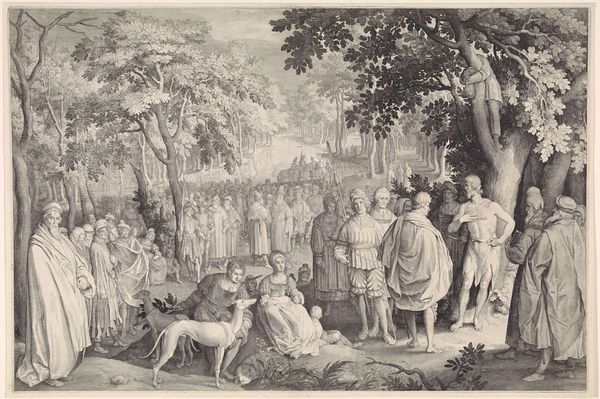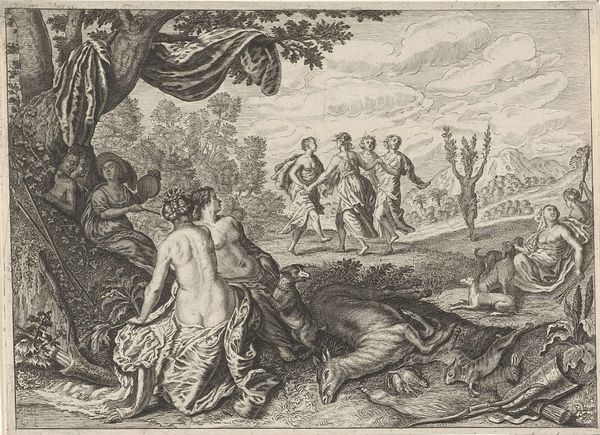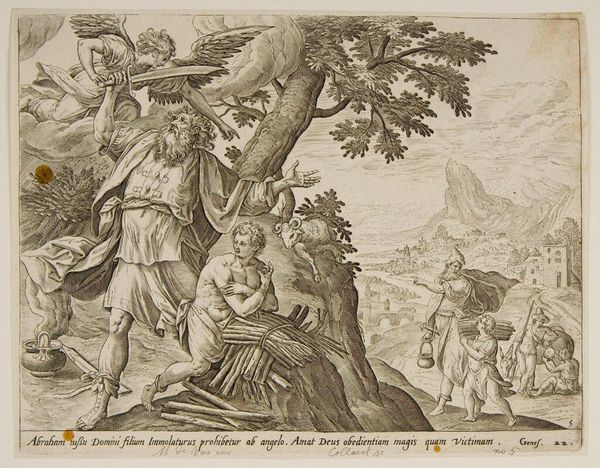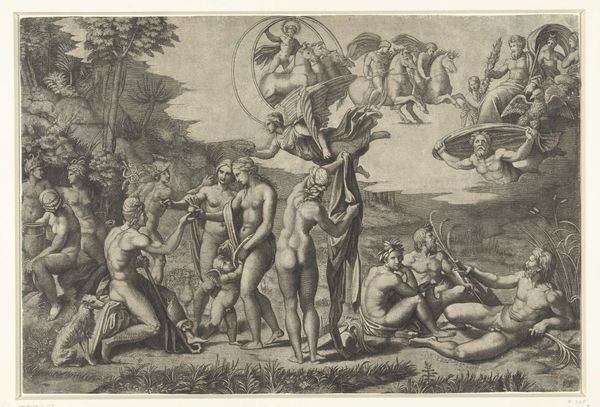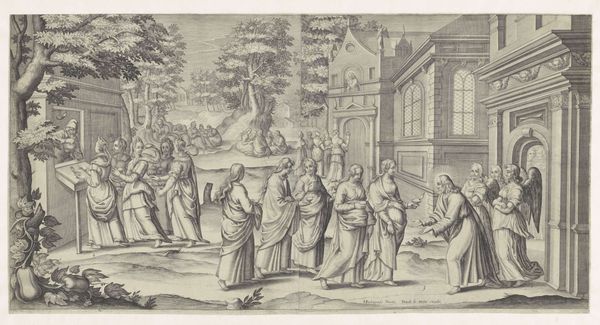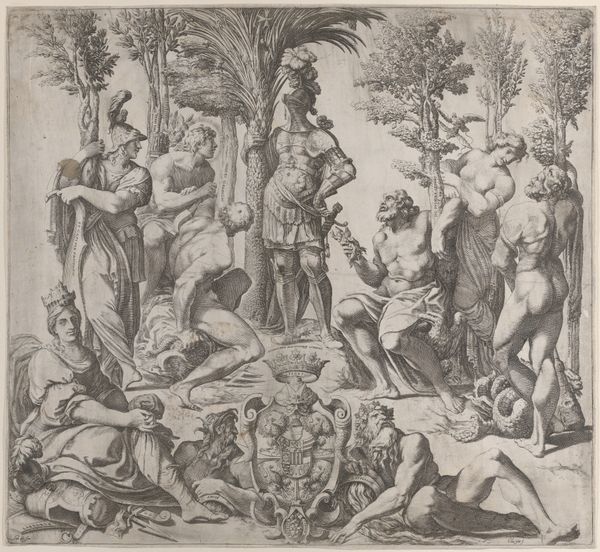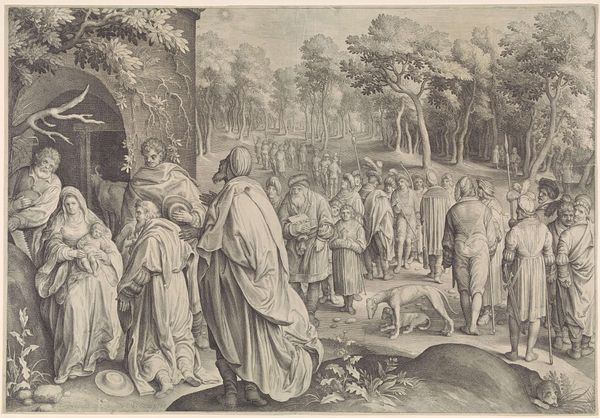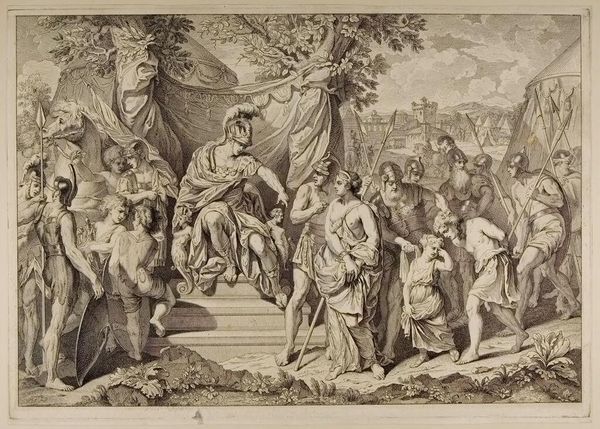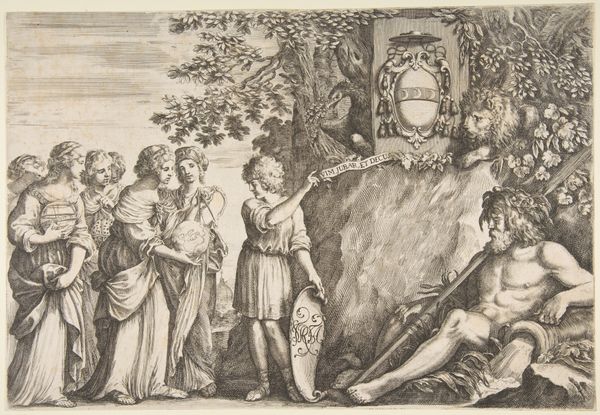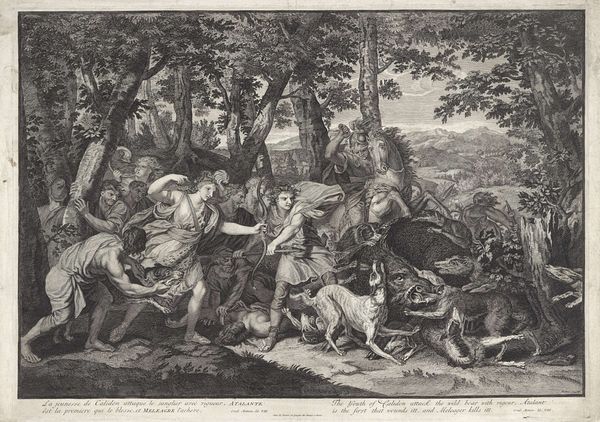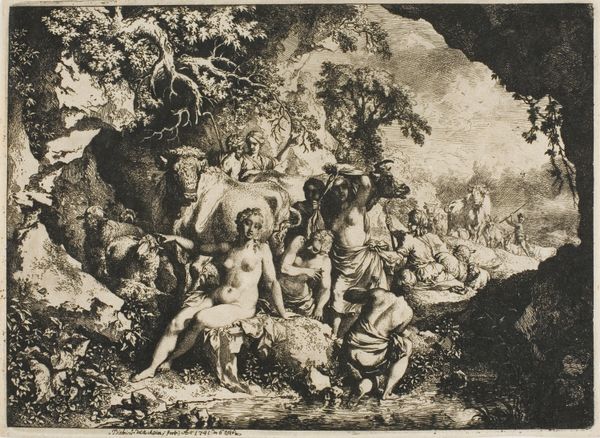
drawing, print, engraving
#
drawing
#
narrative-art
# print
#
landscape
#
mannerism
#
figuration
#
history-painting
#
northern-renaissance
#
engraving
Dimensions: width 720 mm, height 490 mm
Copyright: Rijks Museum: Open Domain
Curator: Here we have "The Israelites and the Moabite Women" by Nicolaes de Bruyn, an engraving dating back to 1617. It's currently housed here at the Rijksmuseum. Editor: It's teeming with figures! I immediately notice the sharp contrast and detailed textures within what seems to be a sylvan paradise, perhaps suggesting an undercurrent of something less idyllic. Curator: De Bruyn, operating within a Mannerist style influenced by the Northern Renaissance, clearly emphasizes narrative here. The print medium itself is critical; engravings like these made biblical scenes accessible for broader consumption and education. We might consider the conditions of artistic production under which prints allowed widespread transmission of both image and meaning in this period. Editor: Absolutely. And what of the composition? The central figures are engaging, and those entangled couples command my eye. I detect a strong directional force with those foreground couples leading my vision deeper into the throng. Semiotically, their pairings certainly intimate a central narrative concerning relationships and human drama. Curator: Precisely. The scene illustrates a story from the Old Testament, where the Moabite women lead the Israelites into idolatry. The "high art" narrative is, inseparably linked here to this history of moral decline but disseminated via printed media into potentially any household that can afford or acquire it. Editor: I wonder about the use of landscape. This Arcadian setting almost distracts from the somber message. Or does it subtly reinforce a thematic contrast—beauty veiling moral decay? How do we decode the purpose? It has all of the elements of classical art, yet contains a story deeply routed in the protestant visual world. Curator: I'd argue this highlights a contradiction within society— the consumption of potentially corrupting narratives through refined art. The very act of printing such images engages viewers in this moral interplay. It's as much about distribution, accessibility, and reception, I would suggest, as about inherent qualities of linear perspective or the fall of light. Editor: A point well taken. The engraving's distribution allowed the idea of biblical consequences to reach many eyes, though the scene seems almost too elegant for such gravity. It’s difficult, at first glance, to reconcile the subject matter with De Bruyn's graceful hand. Curator: This artwork prompts us to question how images – even seemingly beautiful ones - reflect, reinforce, or potentially challenge social norms. That intersection of artistic skill, material context, and public consumption defines its lasting power. Editor: A most captivating intersection indeed; considering how we discern thematic narratives through visual language expands our understanding of artistic interpretation across cultures and contexts.
Comments
No comments
Be the first to comment and join the conversation on the ultimate creative platform.
